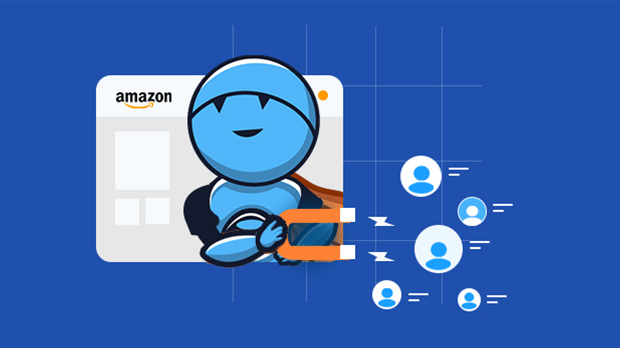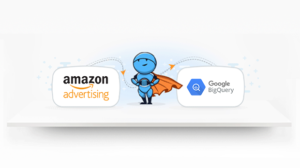You can always rely on Amazon to deliver everything you require. As a result of the global pandemic, lockdowns, and movement limitations, internet sales and e-commerce witnessed an unparalleled increase. Amazon pioneered this trend, cementing its dominance. During Q320, Amazon recorded its most profitable quarter ever.
Amazon has long already mastered client retention. Annually, Amazon’s customer retention is through the sky. As of September 2020, it is anticipated that there would be 126 million Amazon Prime subscribers in the United States, with a 93 percent retention rate after the first year and a 98 percent retention rate after two years. It is a dream for eCommerce business.
Simply increasing client retention by 5 percent may increase profitability by anywhere between 25 and 95 percent. Customer retention is crucial to the long-term success of e-commerce shops and should not be neglected. Considering that it is five to twenty-five times more expensive to recruit new consumers, concentrating on client retention will result in significant cost savings. We now realize that not all e-commerce websites can offer the same reach and quality of service as Amazon. However, there are other components of Amazon’s user interface, customer experience, and marketing that may be replicated “in-house” to increase customer retention.
Significance of Customer Retention for your Amazon Brand
To achieve success on Amazon, it is no longer sufficient to just list and sell things. With several sellers and well-known brands fighting for the same eyes, it is essential to design a customer retention program that will help your Amazon business retain consumers and expand its profit margin over time. Customer Retention refers to the ability of a company’s clients or buyers who have already purchased goods from you in one marketing period, but may not be purchasing these same items again during future periods because they abandoned their purchase(s) due to lack of interest, unsubscribed upon receiving enough product at once as to not need another shipment (a more widespread problem than you may realize), or simply were not satisfied with what they received.
Customer Retention is Essential to Achieving Sustainable Development and Driving Sales
Customer retention should be prioritized because it is simple and can significantly enhance revenue. If a big percentage of your customers consistently return to purchasing more of your items, your sales will be sustainable, and you will not have to worry about people shopping around. Your product or service will be what customers seek while searching for a solution to their issues. And the highlight? You will not need to make any further effort for this to occur.
Amazon Customer Retention Strategies
Retaining customers in an online marketplace differs significantly from retaining them in a physical store or even on your company’s website. In the latter two, you have far greater influence over the actual purchasing experience and your ability to follow up with clients.
Online markets, on the other hand, provide your brand less possibilities to communicate directly with consumers, which makes sense given that the marketplace itself is, in many ways, the brand. There will be fewer opportunities to promote your business because marketplaces are more focused on ensuring that users like their whole experience on the site. However, this does not imply that you cannot develop a client retention strategy for online markets. It is certainly achievable and crucial, but you must alter your perspective on client retention and utilize the available resources.
Allow Your Brand To Stand Out In Search Results
In this instance, marketplace best practices and brand marketing work hand in hand: ensure that your brand name is prominently displayed on every product listing. This includes including your brand into the title, product description, and chosen keywords. What effect does this have on client retention? Simple: it reminds clients that you exist and (ideally) that they had a pleasant experience the last time they purchased a product from you. The more frequently your brand appears in search results, the more probable it is that people will seek it out again.
Focus Listing Text and Material on Potential Consumers
An excellent strategy for acquiring and maintaining clients is to make them feel as though you are speaking their language and addressing them personally. If you cultivate a voice that appeals to the demographic most likely to purchase your items, you have a greater chance of converting them and reminding them why they choose you the first time they shop.
It is essential to employ this tone in all your written communications with clients, but for online marketplaces, it is especially useful in product descriptions. This is frequently the primary – and even the sole – point of contact. Unfortunately, this is not always possible in marketplaces, as product listings and descriptions default to the “best” material regardless of who is selling the goods. In other words, your product listing may resemble that of several other retailers.
How do you ensure that your arguments prevail? First, by delivering the greatest, most accurate, most persuasive information possible. Second, by “controlling” most of the listing. This is referred to as your Buy Box share on Amazon, and the seller with the largest share is in command of the listing’s content.
Provide the Greatest Possible Client Service
It seems apparent, correct? When discussing internet marketplaces, it is vital to note that many firms take a “list it and forget it” strategy. Ultimately, is not customer service the responsibility of the internet marketplace? Sure. To the website. Not for your goods, however. Therefore, you must monitor your merchant account and any customer service difficulties that arise. Ensure that customers know how to contact your brand explicitly, establish a comprehensive list of frequently asked questions and do-it-yourself troubleshooting information, and – most of all – reply swiftly to any messages. If feasible, within a few hours, if not within a day.
Solicit Complaints
This technically fits under delivering exceptional customer service, but it merits more investigation. Did you realize that a staggering 96 percent of unsatisfied consumers do not file formal complaints? However, do you know what they will do? Inform their friends about it. Therefore, it is crucial to reply quickly to clients who do complain and to do all possible to turn their poor experience into a positive one.
But you can do much better: you may actively seek out issues. Numerous internet markets provide both private and public options for this. How so? After a customer purchases a product from you, you can communicate with them privately. This is important in a variety of ways, but for the purpose of identifying concerns, you may ask them to complete a survey or just inquire about their experience.
The public way may be much more beneficial. Occasionally, customers will not complain to you about a negative experience but will instead post about it on message boards in the marketplace. Keep an eye out for this type of reputation-destroying behavior and speak to the individual immediately. Apologize and try to resolve their issue. Not only will you get loyalty points with that client, but others will see your efforts to resolve the issue and feel more comfortable purchasing from you.
Interact with Your Customer
You are aware that many marketplaces permit you to connect directly with clients after a transaction and that this may be utilized to identify issues so that they can be resolved. However, this is not the sole means or motive for following up. Depending on the unique online marketplace, you may be able to reach out to customers who act (such as purchasing an item or subscribing to your email list) just as you would on your own website.
There are several explanations for this:
- To express gratitude for a transaction.
- To inform them that it is on its way.
- To inquire about their experience; to conduct a survey.
- To present them with an exclusive offer.
- To remind them of a recent purchase or recommend a similar product.
In terms of how you may contact clients, certain markets are more accommodating than others, but you will always have some form of accessible alternatives. As stated previously, these messages should be tailored to the recipient and reflect the voice and tone of your organization.
The objective is to make it evident that your brand is speaking directly to them and not the market. This will assist guarantee that they wish to conduct business with you again.
Provide Truthful and Accurate Information
To keep consumers coming back, you must earn their confidence. This requires ensuring that all your listings are current and correct. That any information regarding your company or policy is accurate. That you constantly monitor your inventory to prevent errors.
It simply implies that you should strive to speak and do the correct thing the first time to avoid issues. And if there is ever a problem, you acknowledge it and do your best to rectify it. They will return repeatedly if you demonstrate your honesty.
| Action | Result |
| Create world class customer experience | Amazon offers fast order fulfilment, free returns, and a diversity of products that make clients come back for shopping. |
| Loyalty programs | Features like amazon prime have a great positive impact on the users which make them make more frequent purchases. |
| Reward your customers | Rewarding your customers will small or big surprises can make them your retaining customer. |
| Offer variety of products | When a business owner offers a variety of products to the customers, chances are customers will stay with the business forever. |
| Add innovation to your business | Adding technology is one of the surefire ways to hedge against the competition and reduce manual labor. |
Improve Your Amazon Brand Loyalty Through a Customer Centric Strategy
Let us be practical. Most shops lack the capacity to compete on par with Amazon. However, you may apply some of the megaretailer’s techniques to develop your own customer loyalty campaigns and boost your income. Use these Amazon-inspired customer loyalty strategies to expand or enhance your program.
- Concentrate on offering great customer service to each customer, always. For instance, most consumers now anticipate free delivery and returns. If you do not presently provide this service, you should consider doing so, even if doing so would increase the cost of your items. 92 percent of buyers say they will return to a retailer if returns are free and simple. Customers should be listened to and rewarded for their comments. Then, utilize the consumer comments to enhance customer service and customer loyalty.
- Provide choices for expedited fulfillment, including expedited delivery methods. Keep in mind that online buying has transformed easy delivery and curbside or in-store pickup alternatives from a perk to a need.
- Make it easy and quick for clients to execute a transaction online. As a result of the rise in online purchasing (which is projected to continue) because of COVID-19, speed and ease have become prerequisites for online shopping. Aim for a maximum of three clicks during the checkout process on your website or app. Concentrate on creating a seamless purchasing experience across all media. Finally, frequently test the speed of your website.
- Utilize client information for customized messaging and offers. According to 79% of customers, they are more inclined to engage with a customized offer based on past experiences. For instance, utilize email to give personalized incentives, such as a discount, an early peek at added items, or a new rewards program perk. Utilize data to map and identify consumer journeys and touchpoints. Examine your data to establish which channels your consumers use to engage with your brand (and how often), as well as what they are searching for and purchasing. Similarly, utilize your communications channels to make it simple for customers to locate and comprehend your customer loyalty program.
- Look for opportunities to surprise and please consumers based not only on transactions but also on crucial interactions, such as submitting a product or experience review on your website or another brand channel. Consider rewards that go beyond discounts, such as exclusive benefits or experiences, to build customer loyalty.
- Think outside the norm. Finding the time and resources to develop fresh client loyalty initiatives might be difficult. However, this should not prevent you from promoting employee participation in idea generation, execution, and testing. Consider collaborating with partners or vendors to build a more complete shopping experience or rewards program, for instance. Or consider creating a microsite with distinct landing pages to attract customers.
Acquisition Strategy by Amazon
Amazon focuses on customers’ overall shopping experience, whether it’s the existing customers or the new ones. Some of the following acquisition and customer retention strategies we can learn from Amazon are:
- Build a website that is easy to navigate and checkout without much hassle. An e-commerce platform should be user-friendly and updated.
- If a developer adds new features to the website, ensure they are not too complicated for the users, or it will ultimately affect the user base.
- Users must find the available items on the product lists and checking out after buying or returning the product should not be much more difficult to use.
- Amazon’s website is user-friendly, and anyone can use it without hassle. The website should easily track product returns.
- Amazon keeps updating its customers about products by email and registered phone numbers. These are some of the methods you must follow to retain your customers and make them suitable for new users.
Conclusion
Follow these methods, and your online marketplace accounts are certain to notice an increase in recurring business. Understanding Amazon’s various dashboards and reports will grant insight into your Amazon business. However, brands and agencies selling on Amazon often face data constraints when they scale up. Some data issues include –
- Limitations of Amazon dashboards in terms of customization,
- Historical data availability,
- Absence of a single view across different Amazon marketplaces,
- Manual compilation of reports, and
- Dealing with similar challenges on non-Amazon platforms and then making a consolidated report.
As brands and agencies grow, their data needs grow with them. That is where we, Saras Analytics, can help with our eCommerce-focused Data pipeline – Daton and custom ML and AI solutions to ensure you always have the correct data at the right time. Request a demo and envision how reporting is supercharged with a 360° view.













